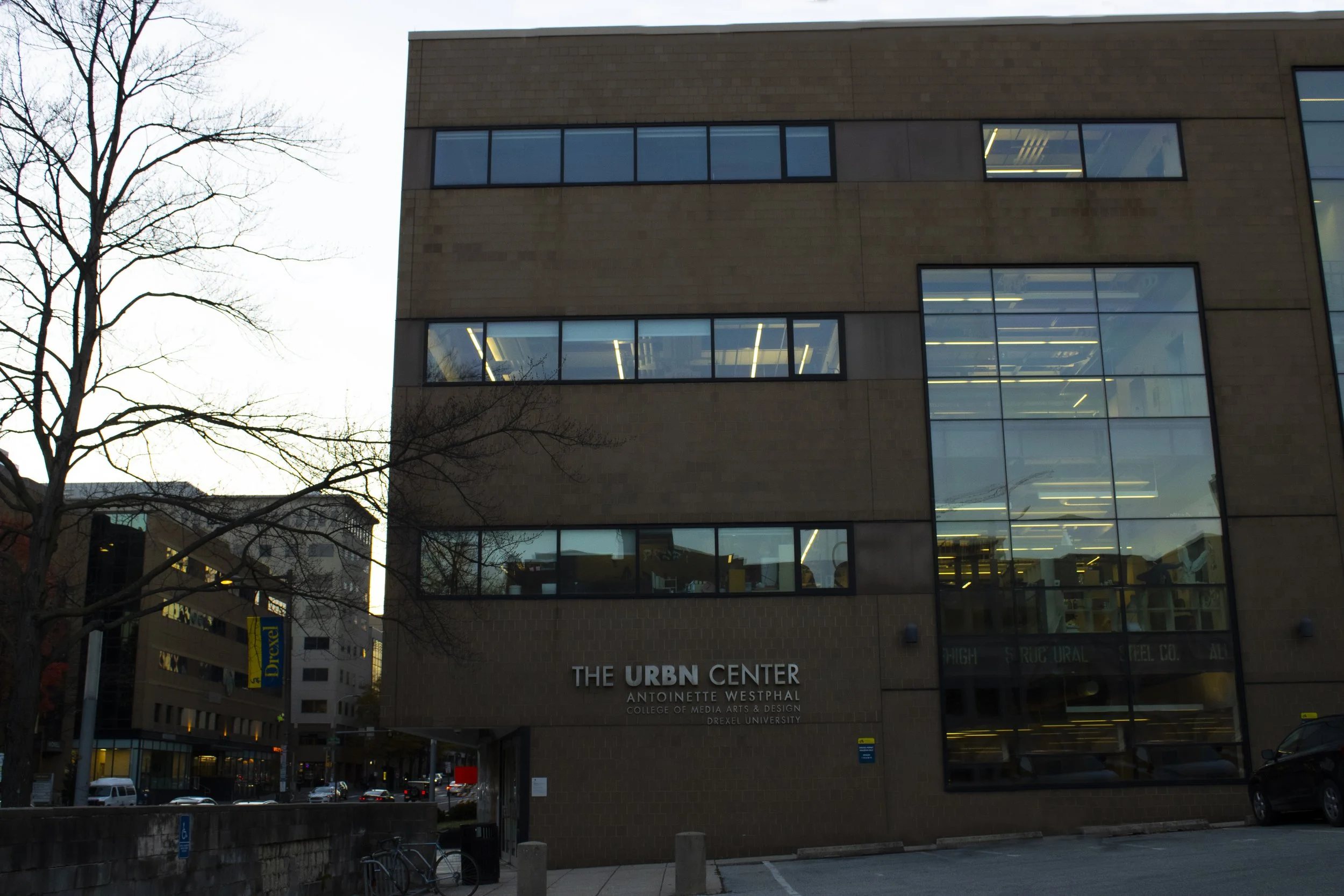Reluctance to Resilience: A Guide to Drexel’s Ten-Week Term
Written and Illustrated by: Katelyn Higashiya
Creative burnout and sleep deprivation, two common sightings of Westphal students at the end of the 10-week term. What is the 10-week term like for the young creatives spending their evenings in studios?
Sitting in the bright multi-purpose room of Myers Hall, I glanced at the time on my phone. It was almost 4 a.m. I rested my back on the rusted metal fold-out chair, staring blankly at my incomplete transformation final for Design I. A wave of exhaustion hit me as I reached for a fine-detail paintbrush. For the past two weeks, I spent evenings in the multi-purpose room, auditing my initial study page and adding meticulous details to a black-and-white oceanic-inspired design. Dropping the brush, I caved into my desire for rest. I indulged in three hours of sleep before I awakened to hastily finish the remaining blank spaces before my afternoon critique.
My first term as a design and merchandising student felt like a fleeting and blurred memory. The planned 18-credit course schedule prevented me from engaging in social life, and I spent most of my first term behind the barred windows of my dorm room. Day after day, I spent countless evenings watching paint dry on illustration boards and salvaging dried acrylic paint. Tirelessly working around the clock, I faked a smile as my neighbors asked out of pity, “You are still here?” Physically and mentally exhausted by winter term, I asked myself: Will I spend the next three years barely meeting the deadlines of the 10-week term? How are other Westphal creatives balancing assignments with a social life? Will I ever be able to navigate the 10-week term with ease?
Drexel’s 10-week schedule challenged my classmates, as the strict deadlines and time-intensive projects forced them to prioritize school over their social lives. For this article, I used an anonymous survey to see how other students at Drexel navigated this intensive schedule, partially looking to commiserate and validate but also to offer some guidance to current and future students. The tight scheduling of each term, coupled with overlapping deadlines, was a recipe for self-isolation. A combination of visual design and merchandising-related courses, the first year was stress-inducing as others like me struggled to constantly stay in a creative mindset. Despite the struggles of the first year, it set a precedent for the increasing intensity of the design and merchandising program. I found out that the fashion design students had it equally or even more stressful.
Slammed with drawing and design courses in their first year, fashion design seniors reflected on the unexpected chaos of their freshman year. Contrasted with other Westphal majors, the fashion design program tasks their freshman with six intense visual studies courses, three drawing courses, and three design courses. The transition into fashion design courses in the second and third years drastically increased the difficulty of distributing time and energy into the studio and general education courses. A fourth-year fashion design student described the experience as “being thrown into a blender and trying to swim sometimes.” Hectic schedules, shrouded in constantly buying supplies and racing against the clock to meet deadlines, defined the first and future years for fashion design seniors. And this was nothing compared to the experience of architecture majors.
From building models to creating detailed structure renderings, my neighbor pushed himself to meet the back-to-back deadlines of his program. As he watched his classmates transfer to other majors and universities, the first term was challenging as he accustomed himself to the pacing and workload of his major. Expanding on adjusting in the first term, a fourth-year architecture student touched on the trials of the first term: “The first term of architecture was a huge adjustment for me, but I also think it was more so college in general. It all felt a bit overwhelming in the first few weeks because the professors were trying to sort out strengths and weaknesses.” Adjusting to the demands of their program also meant cutting hours of sleep to meet deadlines. Pacing and allocating time to different projects became essential as architecture students navigated the rest of their first term.
Game design and production students shared similar sentiments to architecture students as they reminisced about their first term at Drexel:
“My first year here was a little bit rough. It hammered in the fact that I had no idea what I was doing in the field I wanted to enter. I had no time management skills and did not know how to ask questions, so I often struggled to complete assignments, especially in animation classes” (5th Year Game Design and Production Senior).
Starting from the first year into subsequent years, the game design seniors expressed their frustrations with the time constraints of the 10-week system. The fast-paced nature of Drexel’s system makes it impossible to review and comprehend information. Rigorous courses like ANIM 145 (Real Time Visualization) and DIGM 350 (Digital Storytelling) causes students to prioritize one class over the other. “What inevitably ends up happening is you have to give less time to one class over another,” the fourth-year senior continued, “The time you want to put into a class and research or use additional resources is lost to workload. It all feels like you are speed reading courses”.
Other fourth- and fifth-year game design students also expanded on designating time to conduct outside research for mid-term and final projects. Familiarizing oneself with different programs and software is essential for game design and animation majors. While the two majors shared similar sentiments about time management and the rigor of coursework, their experiences in their final years differed. Course availabilities and plans of study shape the term experience, and as many fourth and fifth years complete their last year, their course schedules have simplified since their first terms at Drexel.
After three years, the 10-week term still surprises me as I race against the clock to meet my next deadline. The 10-week schedule is initially grueling; however, the system teaches you about yourself. What is your work ethic? What is your breaking point? What motivates you to keep moving forward? The overarching advice from seniors to prospective and first-year students was the same across the board, time management. A fourth-year architecture student commented, “It is very overstated, but my main advice to incoming architecture students would be to manage their time as efficiently as possible.”
Expanding on time management, seniors advised first-year and incoming students to use a planner or calendar to track assignments and calendars. A fourth-year music industry major stated, “As the years go on, you are going to get more involved, and your schedule will get busier with work and co-op, so get into the habit of keeping track of what you have to get done.” Especially with the influx of assignments and projects, I confuse due dates with classes or forget changes to the schedule. Along with dates and deadlines, seniors recommended spreading the workload to multiple days versus one evening. Even if you submit the assignment on time, procrastination reflects on your work. A fourth-year architecture student added, “I have personally pulled a few all-nighters, and they can really drain you. It will wind up affecting your designs as well if you are unable to function properly”.
The rigor of the 10-week term was a learning experience as it conditioned them to be more responsible and proactive. “Knowing how to work on a tight deadline is crucial in the fashion industry…Knowing how to work under pressure is a must, and Drexel really prepares you for that,” a fourth-year design and merchandising student emphasized. Drafting this article, I reminisced about my first-year struggles at Drexel, trying to balance my perfectionism and productivity. Drawing out timelines and being flexible about course changes helped me navigate the rigor of the term without compromising the quality of my work. Drexel’s 10-week term was exhausting, but it shaped me into a better student and employee.





